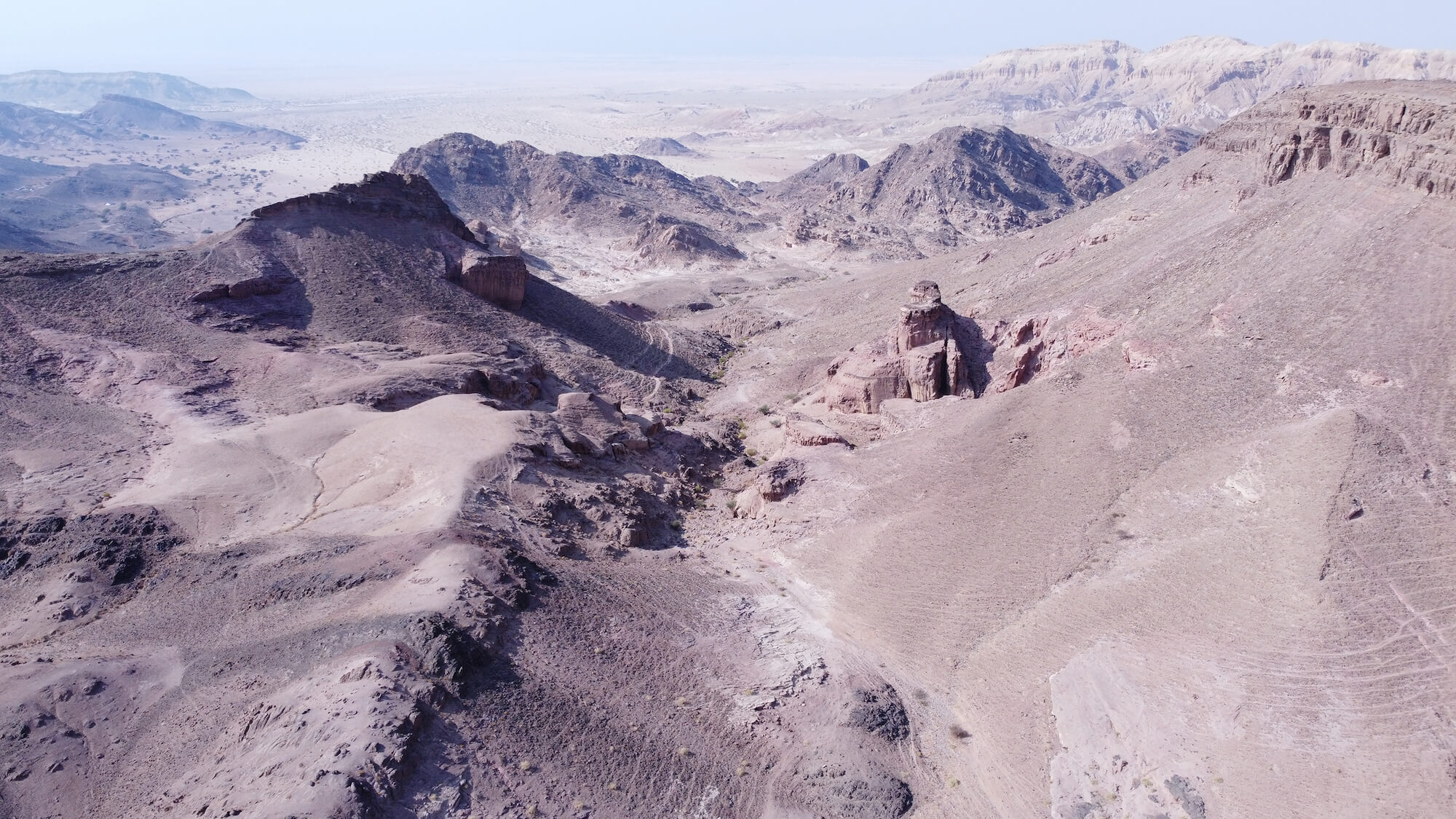
The Emergence of Edom: Recent Debate
March 2023 | Vol. 11.3
By Piotr Bienkowski
Did the Iron Age kingdom of Edom emerge in the 10th century BCE from a nomadic polity that developed sophisticated copper production and social complexity, or was it formed much later, in the late 8th century BCE, as a result of the impact of the Assyrian empire on settlement, agriculture, and trade?
Geographically, Edom was located in the southern part of modern Jordan, between the Dead and Red Seas. As an Iron Age kingdom, it is known from Assyrian sources of the 8th and 7th centuries BCE that mention named kings of Edom who paid tribute and from biblical sources as an eastern and occasionally hostile neighbor of Israel and Judah.
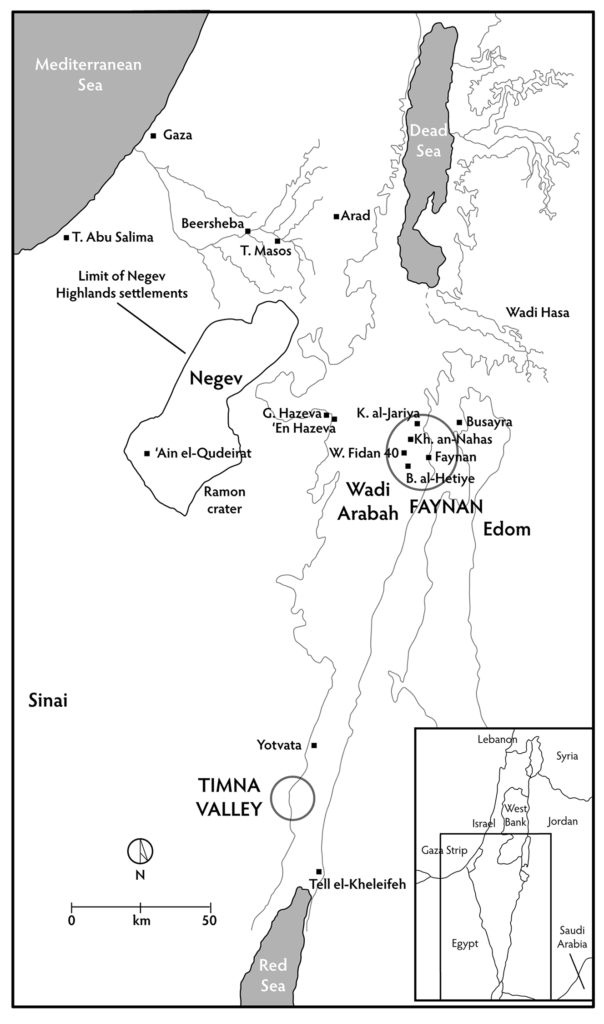
Map showing Edom and surrounding areas (A. Witsell, after original by J.M. Tebes)
The current debate about Edom’s origins was sparked by archaeological fieldwork in the copper-rich region of Faynan undertaken by Thomas Levy and colleagues, begun in 2002 with a final publication in 2014. Faynan is the largest ancient copper-production center in the southern Levant, located in the lowlands of Edom south of the Dead Sea. The archaeologists discovered that in the 10th century BCE, there was a huge boom in copper production with industrial-scale manufacturing and a major center at Khirbat an-Nahas with monumental buildings interpreted as administrative or elite residences. (The exact dating of this boom, however, is contested on the grounds of radiocarbon dating and pottery) Copper production and settlement in Faynan ceased by the end of the 9th century BCE.
These discoveries have thrown into question the issue of Edom’s origins. Previously, it was thought that it developed in the highlands of Edom, where there are hundreds of sites dating between the late 8th and 6th centuries BCE (some continuing later), including Busayra, the largest site in Edom, identified with Bozrah of the Hebrew Bible, and probably the royal center. The excavations at Faynan have stimulated suggestions that, instead, Edom developed much earlier, in the lowlands, with social complexity linked to intensive copper production at Faynan.

View of Busayra, the royal capital of Edom (Photo: P. Bienkowski)
This hypothesis has been particularly pursued by Erez Ben-Yosef, who proposes that local nomads in Faynan engaged in sophisticated copper production, and in the 10th century BCE developed a complex nomadic polity that controlled the Arabah, the Negev Highlands, and the Edomite highlands. He argues that already in the 10th century this was the kingdom of Edom, which later relocated to the Edomite highlands and the major center of Busayra through a gradual process of sedentarization. This process would have occurred between the late 9th century BCE, when copper production and settlement at Faynan ended, and the late 8th century BCE, when Busayra and the first settlements appeared in the highlands. A core part of his argument is methodological, that archaeological evidence of nomadic presence is largely invisible, and as a result, archaeologists underestimate the level of social complexity that nomadic societies can achieve.
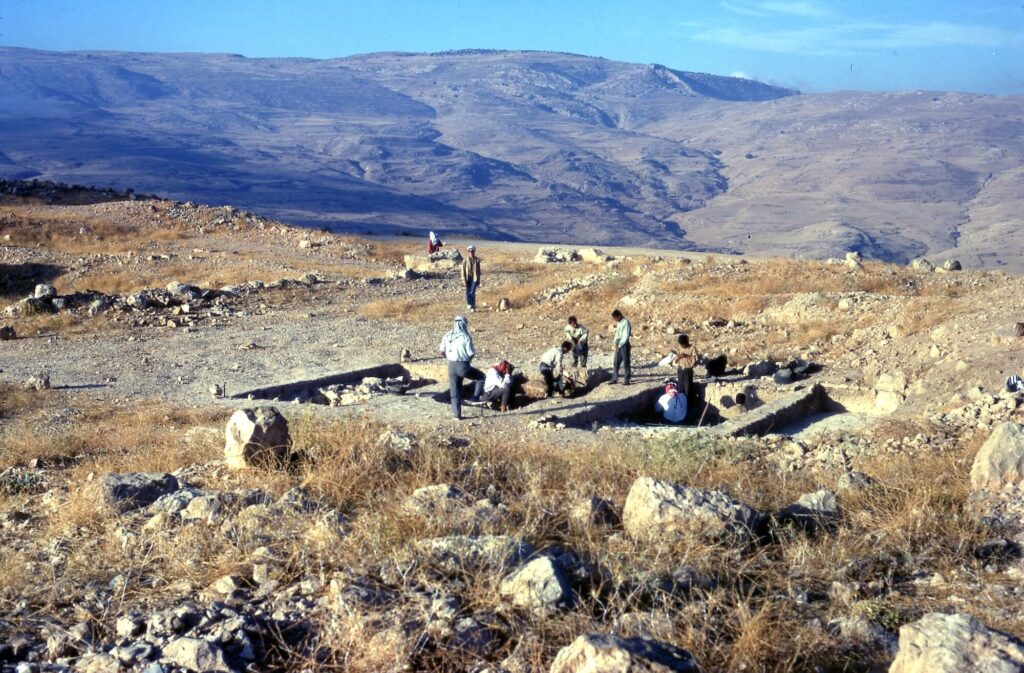
Excavations at Busayra in 1971 (Photo: P. Bienkowski)
At the heart of the debate is the interpretation of the evidence from the excavations at Faynan, alongside Ben-Yosef’s methodological argument about nomads being archaeologically invisible. There are two key points of contention. Firstly, who was responsible for the copper-production boom at Faynan – was it really local nomads who created a nomadic polity, or was it an external entity? Secondly, is there any evidence for continuity between early Faynan and the later Iron Age kingdom of Edom in the highlands?
The first point, Faynan as a nomadic polity, is essentially a theory with no supporting archaeological evidence. In fact, nomads are archaeologically visible at Faynan (e.g. in the Wadi Fidan cemetery, which has been attributed to a nomadic population), but their material culture is completely different from that of the copper-production sites.
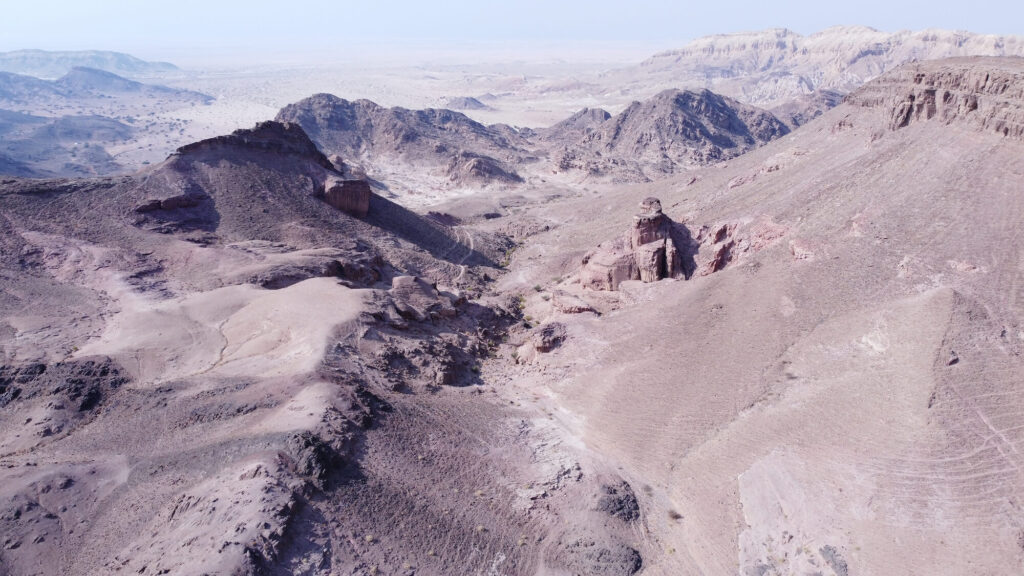
Khirbat al-Jariya, one of the main Iron Age copper smelting sites in Faynan (Photo: Roads to Mansur Project)
Chemical analysis of teeth from the burials at Wadi Fidan shows that the majority of people were not exposed to metal pollution, and therefore did not work in the copper industry. While there were nomadic groups in Faynan, there is nothing to connect them to copper production, or to the monumental, elite buildings at Khirbat an-Nahas, which appeared suddenly, with no transition from nomadism to sedentism, no antecedents in the archaeology of nomads, and with evidence for hierarchy that is not present in the egalitarian cemetery.
Ben-Yosef acknowledges that there is evidence connecting the material found at Faynan to the western Negev, including architectural and ceramic parallels and a shared trade economy, but he assumes that Faynan’s nomadic polity was the controlling force. However, in the absence of evidence for a nomadic polity, it looks as if it was actually the other way around – with copper production at Faynan initiated and controlled from the so-called “Tel Masos entity”, which included the Beersheba Valley and the Negev Highlands, comprising several hundred sites from seasonal encampments to larger and more permanent settlements. There is nothing to suggest that this entity was Edom.

Aerial view of Khirbat an-Nahas, the administrative center of Faynan,showing excavated areas (image: J.M. Tebes)
Secondly, there is a lack of continuity and connection between early Faynan and the late Iron Age highland societies in Edom. Early Faynan was short-lived and regressive, with social complexity and administrative control disappearing after the early 9th century, indicating that the governing polity did not last. There was also a gap of around 100 years between the end of settlement at Faynan and the earliest settlement in the Edom highlands in the late 8th century BCE, and completely different material culture, economies, and settlement patterns. Archaeological evidence, therefore, shows that these were different social groups, demonstrating that the kingdom of Edom did not emerge from the copper-producing society of early Faynan: early lowlands Faynan and later highlands Edom were separate and unconnected.
What, then, can we say about society in southern Jordan in the early 1st millennium BCE? In the 10th and 9th centuries BCE, while the rest of Edom was devoid of settlement, Faynan was a short-lived and regressive industrial site specializing in copper production, probably controlled from the western Tel Masos-Negev Highlands entity. There were nomads living in Faynan, but there is nothing to connect them to the copper industry. Copper production ended by the late 9th century, probably because it failed to compete with the revived Cypriot copper trade, which was much bigger and had a wider reach.
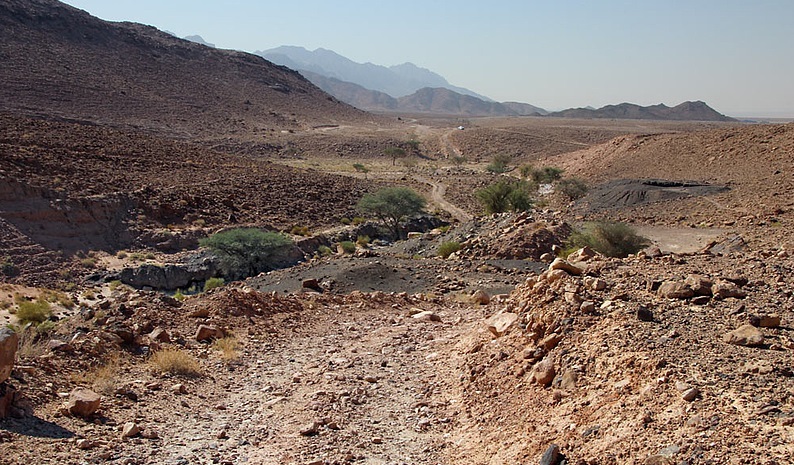
Copper slag heaps in Wadi Faynan (Photo: Art Destination Jordan)
There followed a gap in settlement of about 100 years, although it is likely that nomadic groups continued to occupy both the lowlands and highlands. In Edom, as elsewhere in the empire, Assyrian interest led to an intensification of settlement and social complexity in the highlands in the late 8th century BCE, related to the need for increased agricultural output and production of goods and raw materials, to ensure the payment of tribute and the safety of the Arabian trade caravans. In this period, the Arabian trade in luxury goods was the main economic driver, not copper, and there is virtually no activity in the Faynan copper mines. This process, beginning in the late 8th century BCE, was the true origin of the kingdom of Edom, not the short-lived industrial site of 10th-9th-century BCE Faynan that was part of the similarly short-lived Tel Masos-Negev Highlands entity.
Piotr Bienkowski is Emeritus Professor of Archaeology and Museology at the University of Manchester. His article,“The Formation of Edom: An Archaeological Critique of the ‘Early Edom’ Hypothesis”, recently appeared in the Bulletin of the American Society of Overseas Research.
Further reading:
Ben-Yosef, E. 2019. “The Architectural Bias in Current Biblical Archaeology.” Vetus Testamentum 69, 361-387.
Bienkowski, P. 2022. “The Formation of Edom: An Archaeological Critique of the ‘Early Edom’ Hypothesis.” BASOR 388.1, 113-132.
Crowell, B.L. 2021. Edom at the Edge of Empire: A Social and Political History. SBL Press.
Levy, T.E., Najjar, M. and Ben-Yosef, E. (eds) 2014. New Insights into the Iron Age Archaeology of Edom, Southern Jordan, Monumenta Archaeologica 35, Cotsen Institute of Archaeology.
How to cite this article
Bienkowski, P. 2023. “The Emergence of Edom: Recent Debate.” The Ancient Near East Today 11.3. Accessed at: https://anetoday.org/bienkowski-emergence-edom/.
Want to learn more?
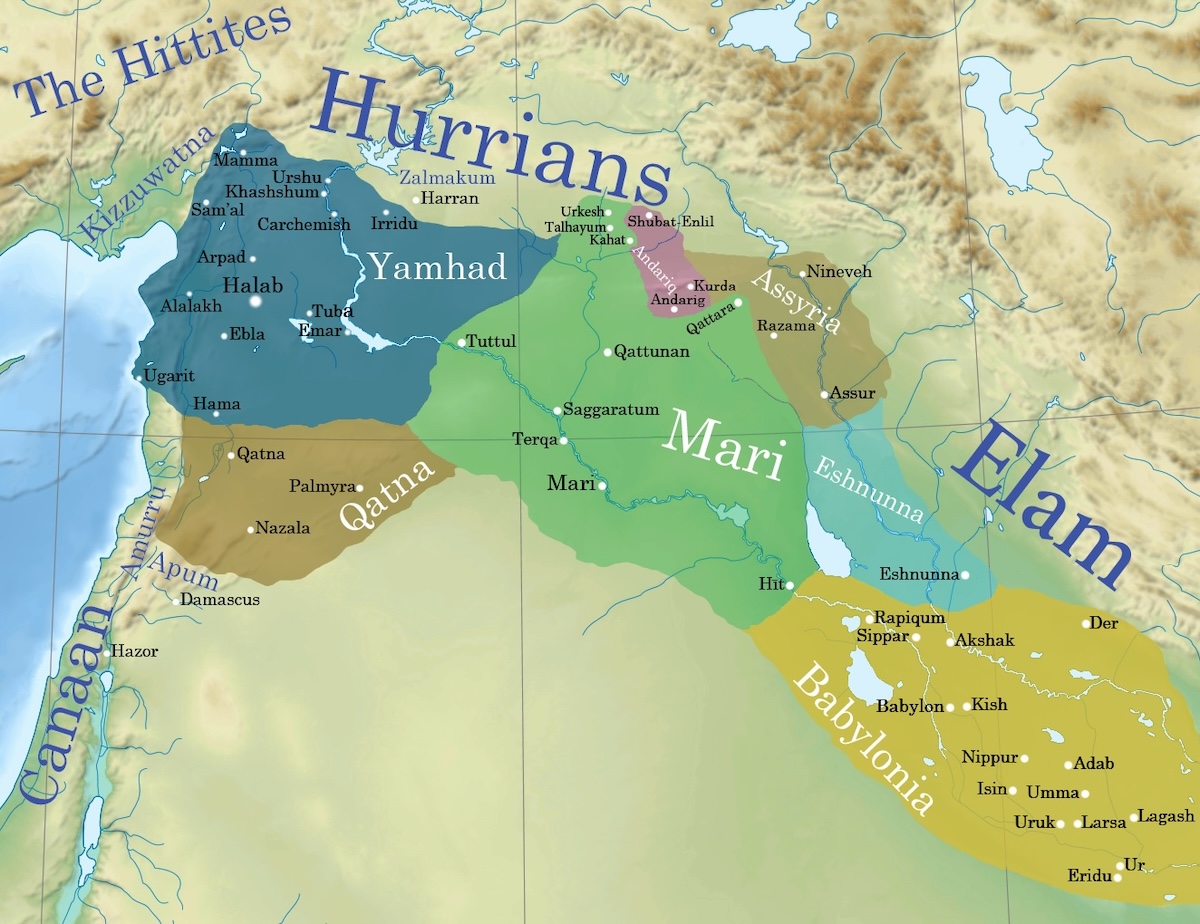
The Amorites: Rethinking Approaches to Corporate Identity in Antiquity
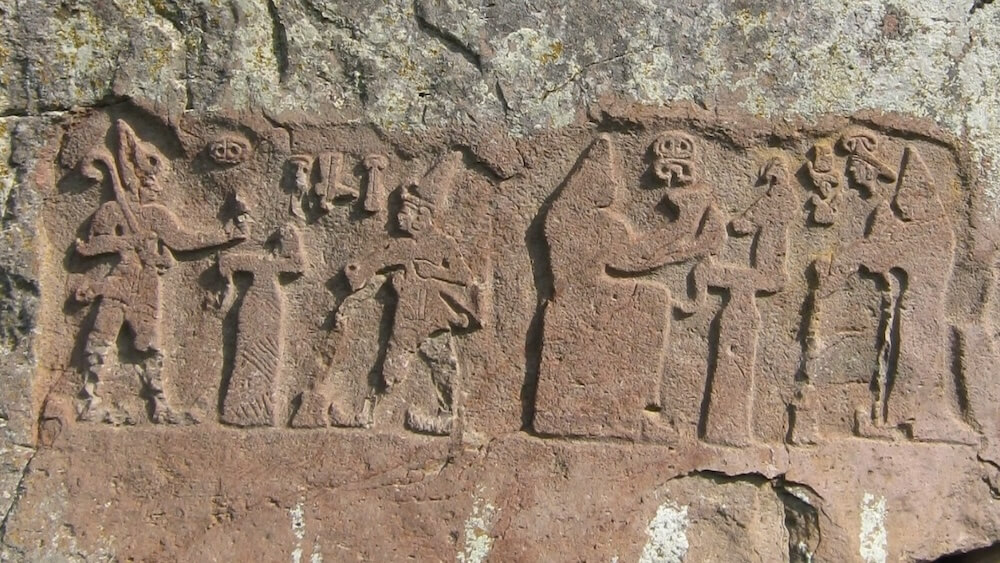

Cyprus and Ugarit: A Tale of Two Late Bronze Age Mercantile Polities


Post a comment